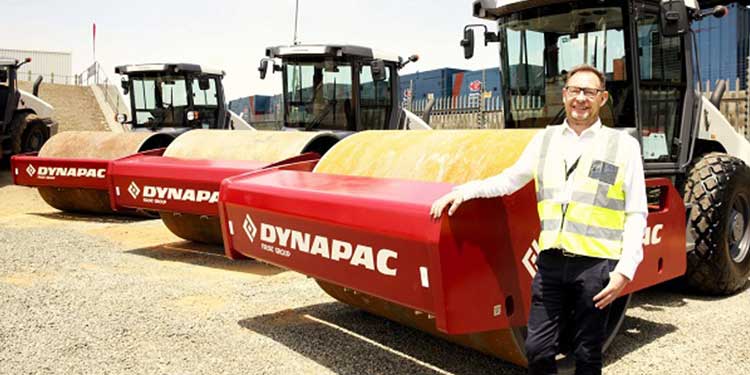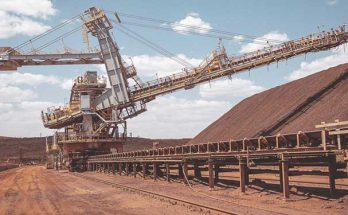
The 15 t CA50 Rhino soil compaction machine from original equipment manufacturer Dynapac has been introduced in South Africa.The CA50 is a member of Dynapac’s larger Rhino line of compaction equipment, which is sold all over the world. Dynapac, a member of the Fayat group of enterprises, is commemorating its 90th anniversary this year.
At the October 31 introduction in Boksburg, Dynapac Southern Africa business manager Neville Marthinussen stated, “The static linear load is the key aspect that sets Dynapac ground compactors apart from competing machines on the market.” He went on to say that the CA50 Rhino’s specific load of 49.6 kg/cm was greater than that of rival machines.
The downward pressure that the compactor’s drum applies along its breadth while it is at rest and not subjected to any vibratory forces is known as the static linear load. By efficiently displacing air and moisture from the soil to eliminate voids, a high static linear load directly affects the density and load-bearing capacity of the soil, increasing compaction efficiency and needing fewer passes overall. In order to improve soil stability and facilitate initial compaction prior to applying vibratory forces, this is particularly crucial for cohesive or fine-grained soils.
“The 15 t machine is becoming more and more popular for stabilization since it is incredibly nimble. In order to provide the asphalt a more firm base before tar is put, analysts advise combining cement, sand, and water.
Such standards are increasingly being requested by the road construction sector. We run the risk of losing a significant portion of the dirt roller business if we don’t manufacture and introduce. This machine’s need and potential are clear,” Marthinussen said.
Apart from the static linear load, the CA50 Rhino’s structural benefits are characterized by its smart compaction system, which includes an optional compaction meter to achieve optimal efficiency and compaction results, and its high-thickness drum, which increases longevity.
According to Marthinussen, operators might modify the frequency and amplitude settings to assist avoid problems like double-jumping and bouncing. A high amplitude setting would result in better compaction. The CA50 Rhino also has a drum variant with 120 pads for those who prefer a pad foot layout, giving customers more versatility in a range of applications.
Another crucial component of the CA50’s design, according to Marthinussen, is the machine hood’s high-position air inlet. This device minimizes the amount of dust and debris that enters the engine compartment while ensuring clean combustion and cooling by drawing air from an elevated place. The machine’s top draws cold air, which keeps the operator cool and reduces noise levels on the job site by diverting the air away from the operator and minimizing dust entry.
In addition, the machine has an ergonomic cab for operator comfort and a high turning radius for improved maneuverability. The traction system of the CA50 Rhino maximizes traction and improves uptime with dual-speed capability and a no-spin differential on the rear axle. Maximum hood opening improves maintenance efficiency.
Marthinussen cited encouraging developments in the building industry, which were crucial in deciding when to debut. “Over the last five years, the construction industry—particularly road construction—has been sluggish, but now there is a resurgence as major projects are being awarded. It is evident that the industry is expanding, and we must adjust our strategy accordingly. Although we currently have state-of-the-art asphalt and soil compaction equipment, we must launch goods that cater to particular needs due to market demand, he stated.
Martinhussen emphasized that although the CA50 was previously accessible worldwide, it had not yet been developed especially for African settings. “We will be able to compete more effectively and strengthen our position in the market if we close this gap. We ought to have it if customers require it. It is crucial to develop items that satisfy market need, he stated.



